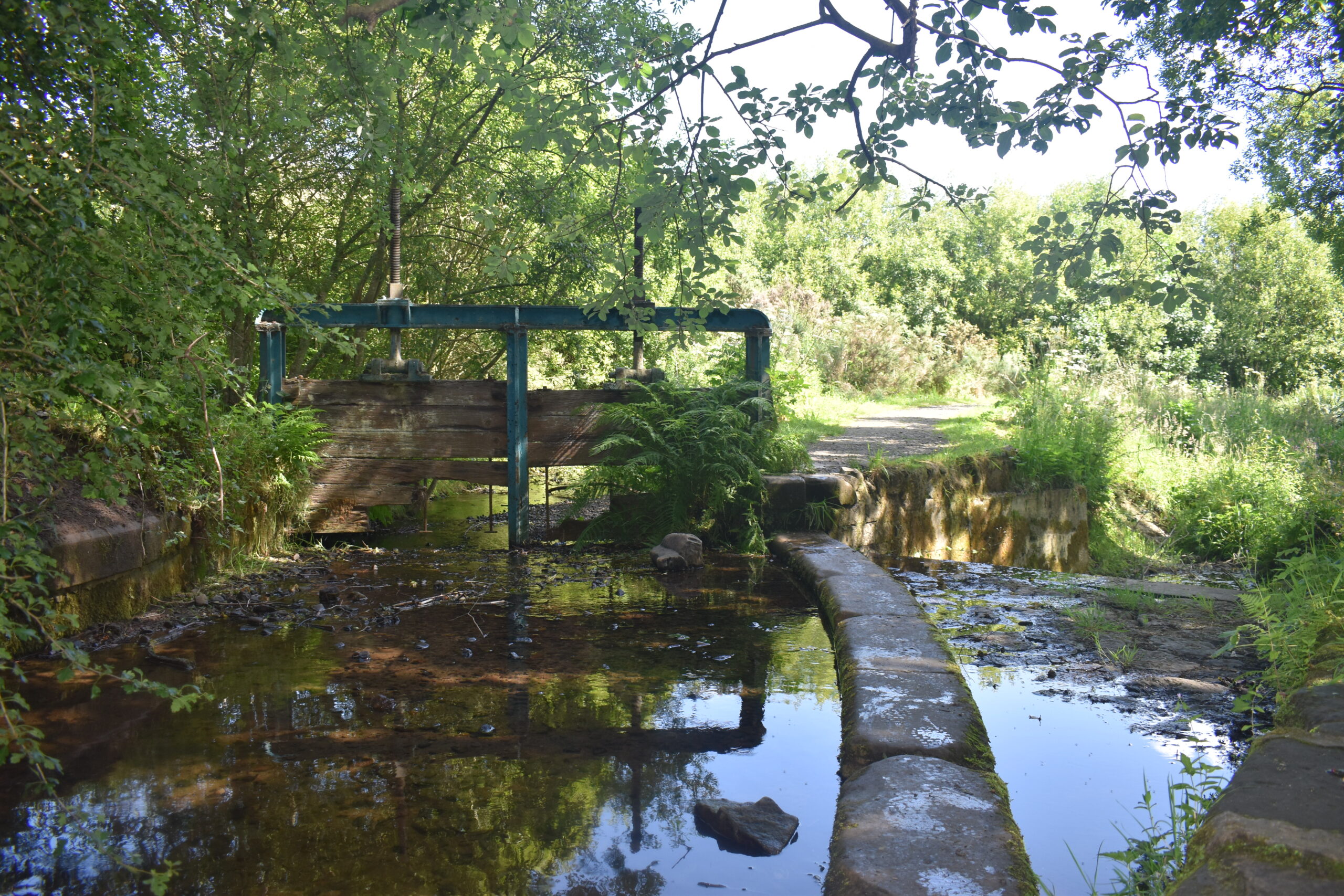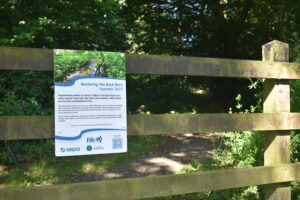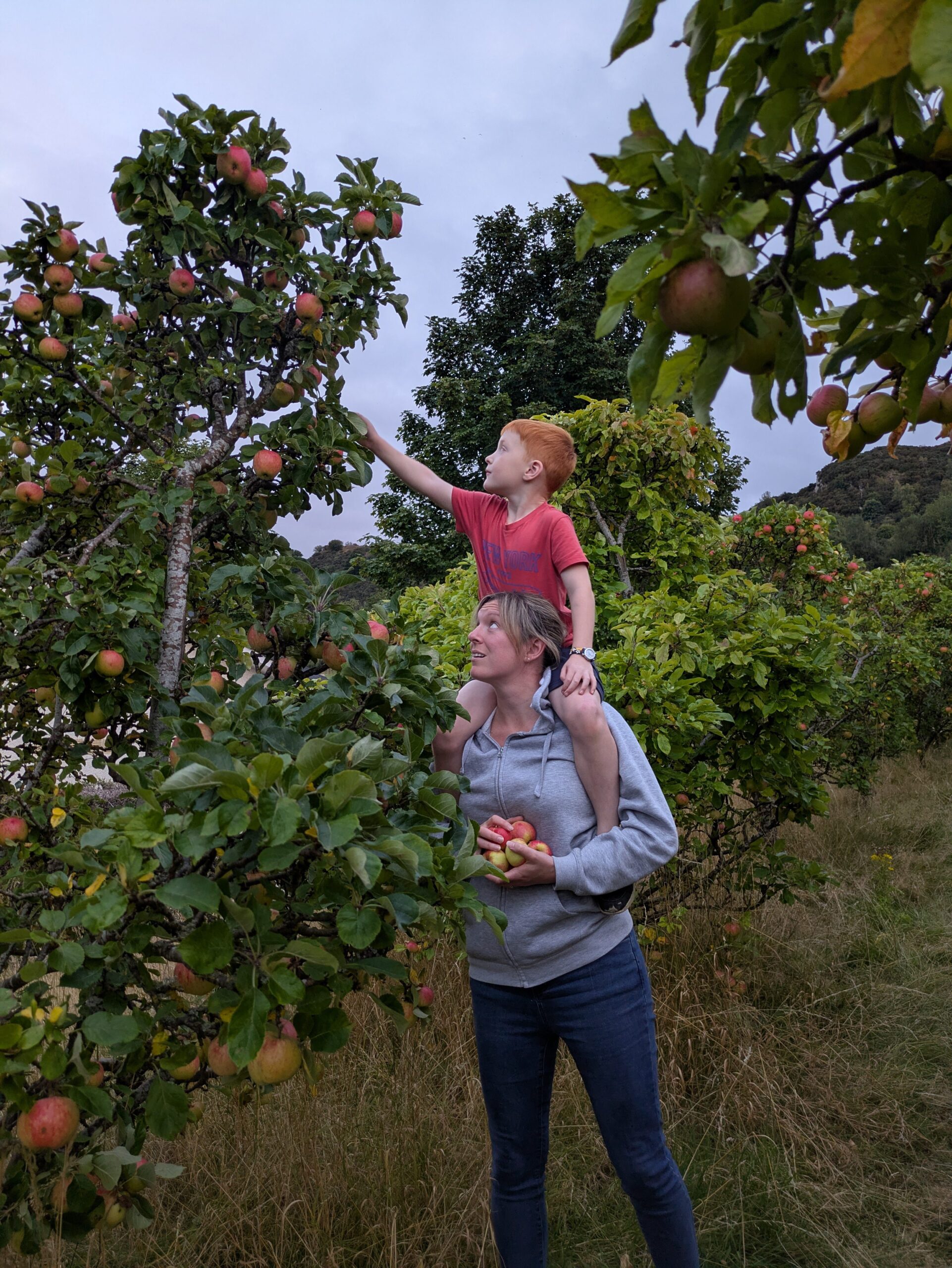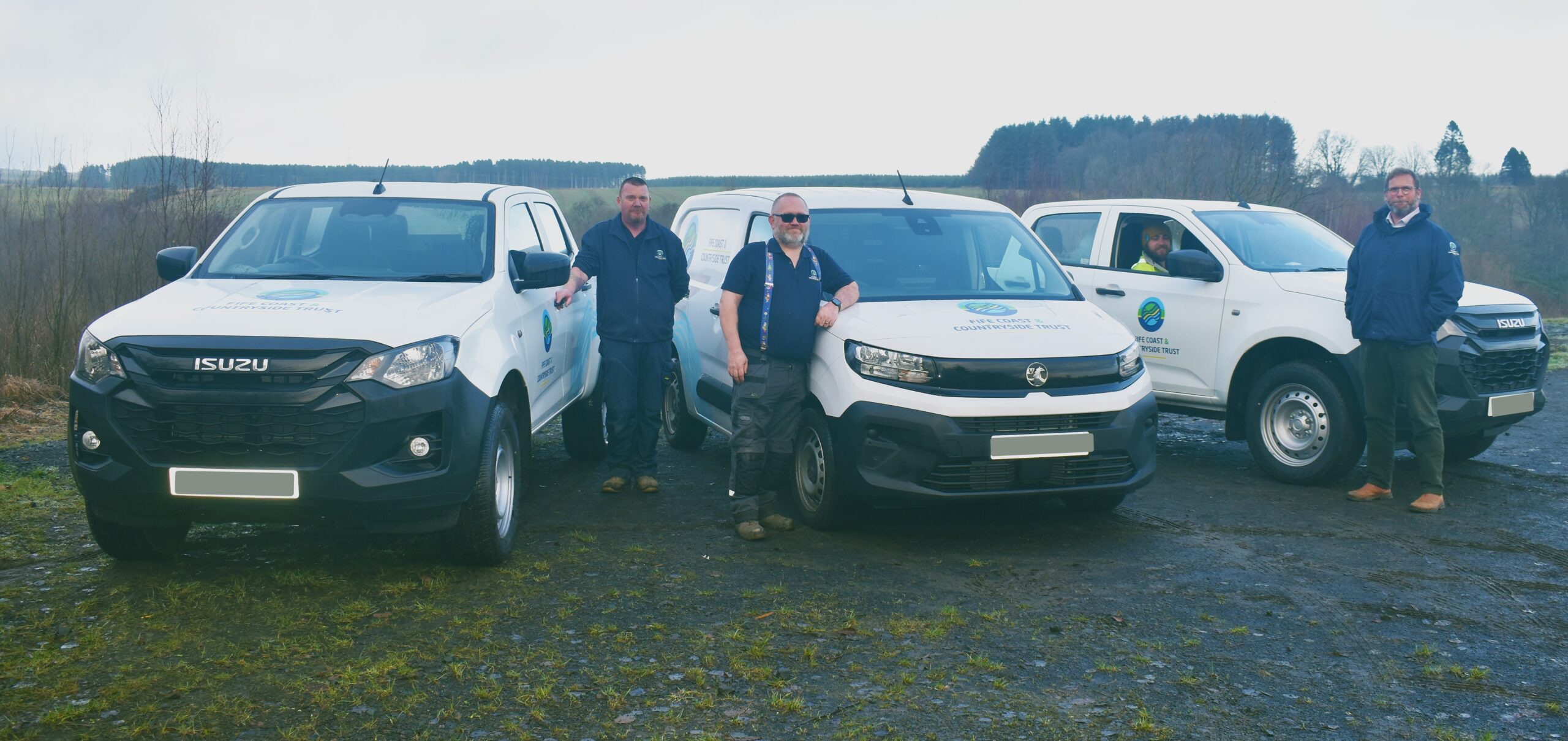- experience
- engage
- enjoy
River Restoration Project Enters New Phase
Publish Date: Wednesday July 16, 2025

An important environmental project that will bring significant benefits to wildlife, biodiversity and communities to the north of Glenrothes and Markinch has begun its construction phase.
The Back Burn project will see 5.8 km of watercourses restored to their more natural condition, which will bring many advantages including local resilience to climate change.
Fife Council and the Scottish Environment Protection Agency (SEPA) have commissioned this river restoration project. It’s being managed by Fife Coast and Countryside Trust (FCCT), supported initially with funding from the Water Environment Fund and forms part of the wider Leven Programme. The project’s technical designers are cbec eco-engineering.
Contractors McGowan Environmental Ltd have now been appointed to the project following a design phase that included site surveys, computer modelling, securing permissions and stakeholder engagement.

The Back Burn has been affected by many man-made changes over time. These changes include artificial straightening of the burn with wire baskets filled with stones (gabions) and the building of barriers, such as weirs, across the burn.
Restoration works will now begin with a focus on improvements at Coul Den and Balbirnie Park. At Coul Den the original watercourse will be restored, while preserving the historic blue sluice gate. Visitors will also see new bridge and boardwalk crossings being created which will improve water flow and flood management.
Improvements at Balbirnie Park include removing weirs to allow the burn to flow more naturally and installing step pools in the river to support wildlife.
Exciting moment
“The start of construction on the Back Burn project marks an exciting moment for our local communities,” said Councillor Jan Wincott, Fife Council spokesperson for environment and climate change.
“This is about more than just improving a waterway — it’s about bringing nature back into the heart of our towns and creating spaces where people of all ages can connect with the environment.
“We’re grateful to everyone who’s helped shape this project and look forward to seeing the Back Burn become a place the whole community can enjoy and be proud of.”
Lynda Gairns, River Restoration Specialist at SEPA, said: “SEPA’s Water Environment Fund (WEF) are delighted that the Back Burn restoration project is starting its work phase which will see construction taking place over the summer months. This disruption will be short term and after a few growing seasons will see the Back Burn, and its surrounding greenspace, recover and improve habitat for its fish populations, nature, and access for residents.
“We are committed to improving rivers that have been historically altered throughout Scotland, for the benefit of nature, climate and people.”
Experience
Jeremy Harris, Chief Executive at FCCT, said: “We bring to the Back Burn our experience from managing the highly successful River Leven Restoration Project for our partners. We’re excited to begin the building phase at Coul Den and Balbirnie Park. Visitors will see some big changes that are all to the benefit of species biodiversity, flood resilience and local communities.”
Diversions will be clearly signposted at both sites and visitors are asked to please adhere to them.
For up-to-date information on path closures and diversions please keep an eye on FCCT’s social media and project page.
A similar river restoration project is being developed for the Whinny and Brankholm Burns in Rosyth.
Our main picture shows the historic blue sluice gate which will be restored.


